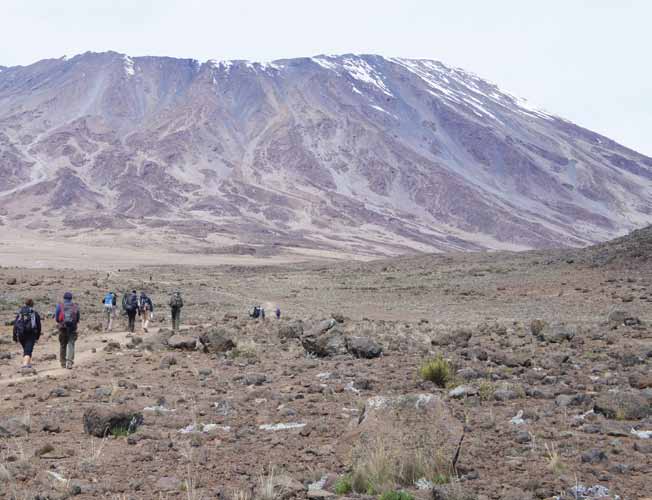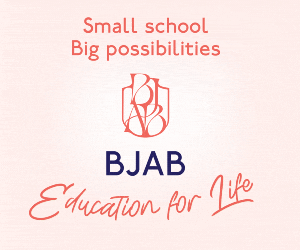At 20,000 feet above sea level, Africa’s biggest mountain, Tanzania’s Mount Kilimanjaro, is the highest walkable mountain in the world. Andrew Chaplin recounts his climb to the summit in aid of charity
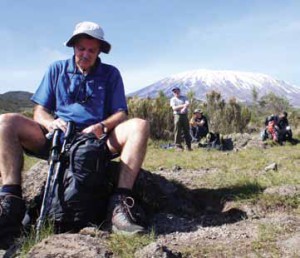
Kilimanjaro was both a personal challenge and a family holiday as my dad (John) and brother Michael had signed up for the climb as well. My training programme was meant to be two months of intensive gym sessions and long walks. Then December happened and I unwittingly went on the – gruelling at times – mince pie and mulled wine training regime. Come January 5th and our flight out to Tanzania, I had probably done a fifth of what I had hoped to. But, hey, someone in some pub somewhere told me that you didn’t need to be that fit to climb Kilimanjaro, so I was obviously going to be fine. We had chosen to go with The African Walking Company, which meant there would be other climbers in our group. They turned out to be five Brits, two Canadians and four Americans, a real mixed bag of ages, backgrounds and accents, but all with the shared desire to go walking up the side of a very large dormant volcano. We chose the Rongai route, which is a six-day, five-night climb and one of the more scenic paths, with a good success rate of people getting to the top.
LONG WALK
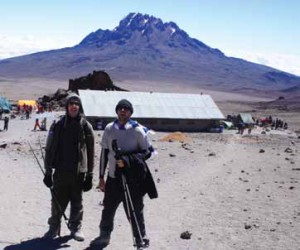
Once on the mountain we averaged about seven hours of walking a day, except for summit night – and I’ll get to that in a bit. Apart from walking through jungle, moorland, scree, snow and clouds, the rest of the time you’re either eating, trying to drink five litres of water a day or going to the loo…a lot.
Helping us through all of this we had seven guides and 35 porters who carried everything – our rucksacks, our tents, all the cooking equipment, the toilets – everything. Every morning they would pack up our equipment after we left camp, overtake, and, by the time we arrived at our next destination, be waiting with pitched tents, a cooked meal and endless questions about Wayne Rooney. I don’t know how they did it, they’re truly amazing.
STAY POSITIVE
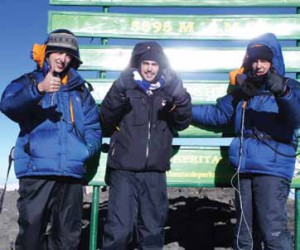
It turned out that the random bloke in the pub was right, you don’t actually need to be super-fit to climb Kili. But you do need bucket-loads of determination. If and when altitude sickness strikes, you have to know you’re going to get through it. This became very apparent on days two and three, when I suffered badly from headaches, nausea and the equivalent of one of the worst hangovers on record. But the guides are there to tell you to keep drinking water and keep eating – you lose your appetite at high altitude – and keep a positive attitude. And that really is the key, keeping positive. That may sound a bit naff to a slightly cynical Brit like me, but it’s true, and you need every ounce of Rocky-like self-belief for summit night. To put it mildly, summit night was absolutely hideous. I can best explain this by outlining the day’s schedule:
1830 Finish dinner. Go to bed. Try to sleep
2230 Wake up (if you slept). Have breakfast
2330 Begin climbing 1,200 metres to the summit
0630 Arrive at the summit after seven hours of walking in sub-zero temperatures in complete darkness. Shattered
0645 Begin the hour and a half walk around the crater rim to Uhuru – the highest point (5,895 metres)
0815 Arrive at Uhuru – delusional, running on empty, incredibly emotional. Take some photos. Cry
0830 Begin the hour and half walk back round the crater rim
1000 Begin the three hour climb down back down to camp
1300 Rest for one hour. Eat lunch
1400 Do a casual three hour walk to the next camp
1700 Arrive feeling 90 years old and never wanting to stand up again
NEVER AGAIN
“Would I do it again? Absolutely not”
Seventeen-and-a-half exhausting, intense and draining hours. Was it worth the effort? Yes. Did I feel an amazing sense of achievement when I reached the top? Yes. Would I do it again? Absolutely not. Kilimanjaro was an incredible once-in-alifetime experience, and I really do mean the bit about once.
There was much discussion between the people in our group about how we’d report back on our Kili-experience. We said we’d be idiots to recommend it, but then again we were half-way down a mountain, oxygen-starved and completely delusional at the time this discussion took place. With a small amount of hindsight, it is an incredible thing to do, and – in a complete U-turn of what I previously said – I would definitely recommend it. However, it’s much harder work than I had foolishly given it credit for, and that big lump of dormant volcanic rock doesn’t make it easy.
The Chaplins’ Kilimanjaro climb raised nearly ¤5,000 for The Prostate Cancer Charity. To sponsor them, visit www.justgiving.com/the-charlies Andrew estimates that flight, climb and equipment for one costs in the region of ¤3,000 www.africatravelresource.com


